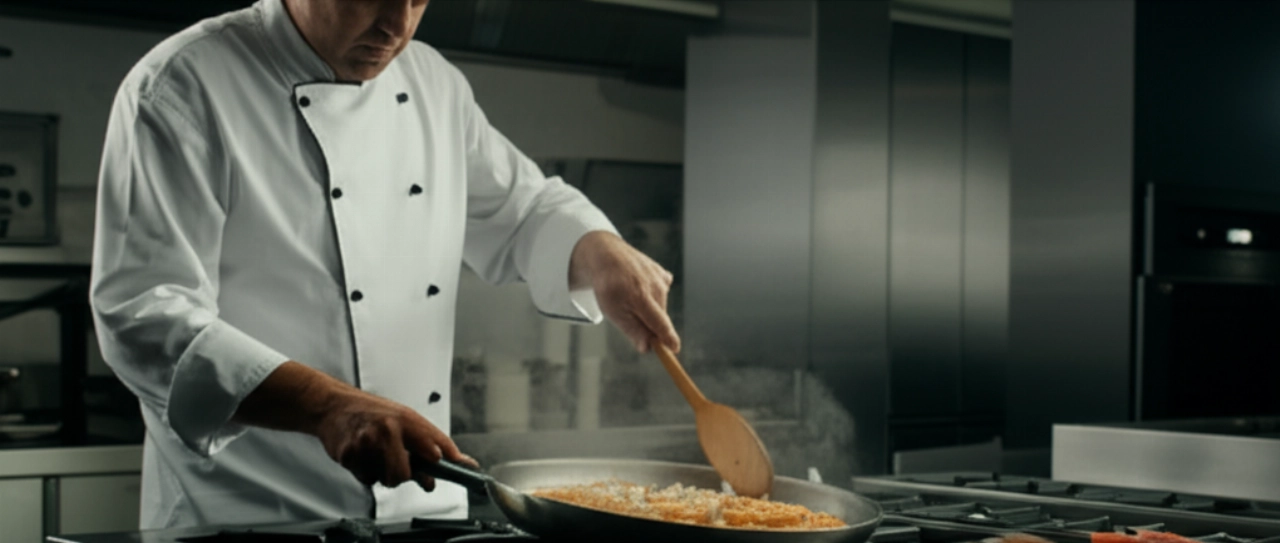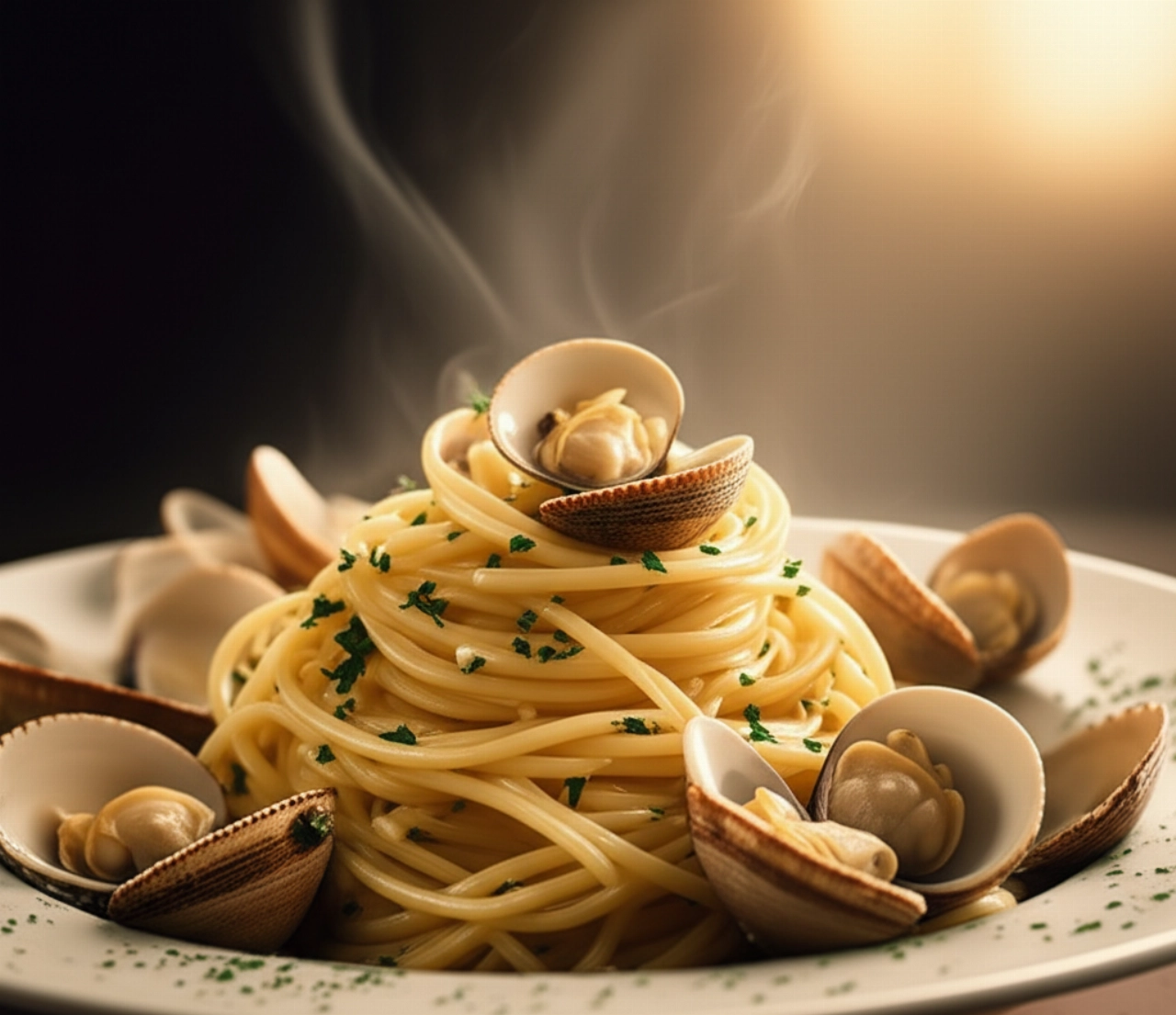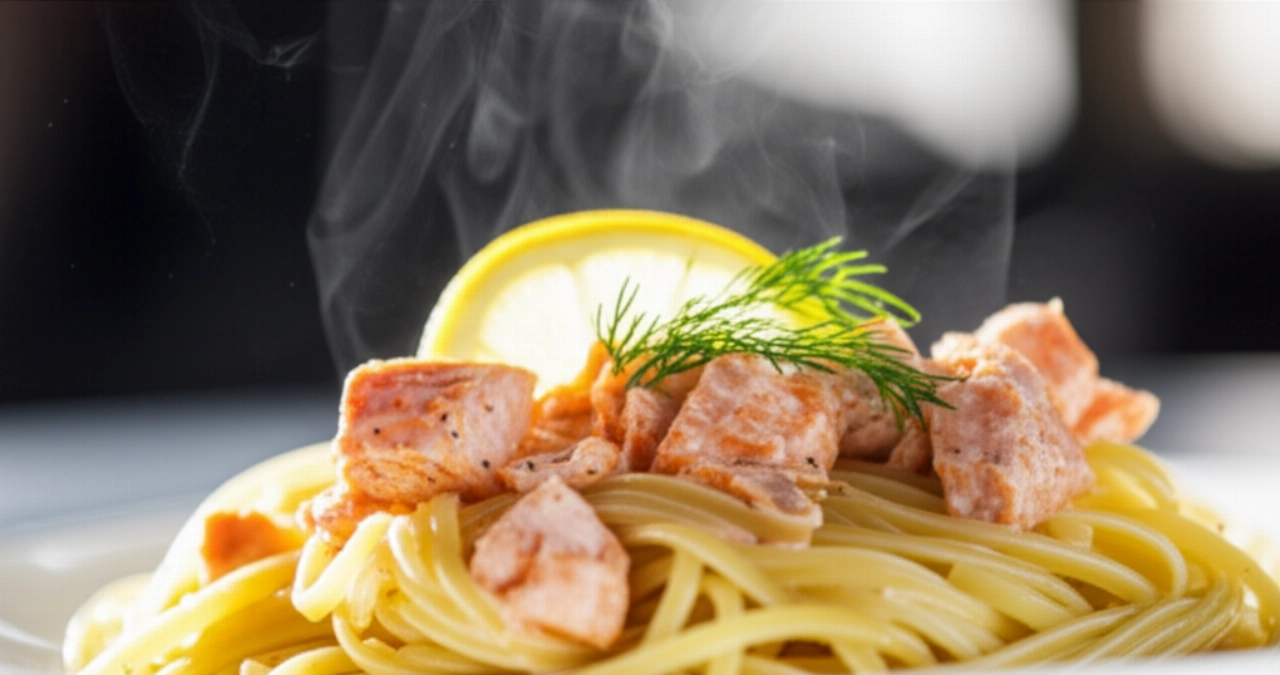Do you dream of bringing a pasta dish to the table that smells of the sea, with succulent seafood and an enveloping sauce that transports you directly to the coast? Imagine the astonished expression of your guests or the joy of your family in front of a dish that tastes of vacation, sun, and authentic maritime tradition.
But how many times have you tried to make seafood pasta and ended up with rubbery seafood, a watery sauce, or a flavor that just isn't right? Finding "that real" recipe, one that guarantees success and makes you feel like a true seafood chef, seems like a challenge. The fear of wasting precious ingredients or not achieving that unmistakable taste can hold back even the most passionate cooks.
Make yourself comfortable. Here you won't just find a list of ingredients, but the definitive guide, full of tricks and tips, to prepare a Seafood Pasta so good it will drive everyone crazy. Success is guaranteed, and the scent of the sea will fill your kitchen, bringing a piece of the Italian coast directly to your table. I'll guide you step by step for a rich and fragrant seafood sauce, with every element cooked to perfection, for a Seafood Pasta that will make you feel by the sea, with guaranteed success.
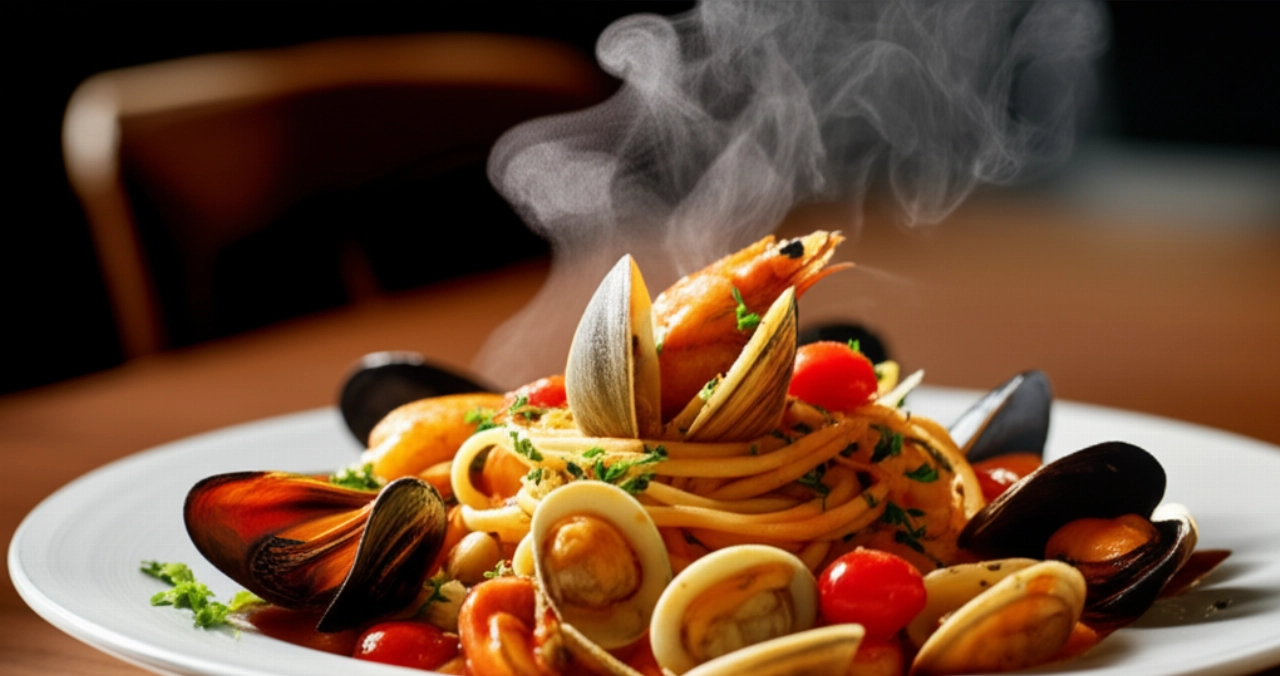
Ingredients for a Dream Seafood Pasta: The Choice That Makes the Difference
The true magic of Seafood Pasta begins with the quality of the ingredients. It's not just about quantity, but about selection and care. Here's what you'll need and why every choice is fundamental:
- Freshest Seafood: This is the heart of the dish. You'll need:
- Mussels and Clams (Vongole Veraci): About 500g of each. Choose them live, with tightly closed shells. They provide the most intense flavor and precious seawater for the sauce.
- Shrimp (or Prawns): 300g. Prefer fresh ones, with the shell. Their flavor is sweeter and their texture more tender.
- Squid (or Cuttlefish): 200g. Choose small-to-medium sized squid, as they are more tender. They will be the "meaty" part of your seafood mix.
- Expert tip: If you can't find everything fresh, you can use excellent quality frozen seafood, but the result with fresh will always be superior.
- Long-Cut Durum Wheat Pasta: 320g. Spaghetti, linguine, or vermicelli are perfect. Their shape allows the sauce to adhere beautifully, and their cooking resilience is essential.
- Fresh Cherry Tomatoes: 300g. Datterini or cherry tomatoes, sweet and juicy. They are the red soul of the sauce, providing freshness and a balanced touch of acidity.
- Garlic: 2-3 cloves. Don't overdo it; it should scent, not overpower the seafood.
- Fresh (or Dried) Chili Pepper: To taste. It adds that hint of zest that enhances the flavors.
- Dry White Wine: 1/2 glass. A good white wine, not too aromatic, is essential for deglazing and leaving an intoxicating aroma.
- Fresh Parsley: A nice bunch. Finely chopped, it's the final green and aromatic note that completes the dish.
- Extra Virgin Olive Oil: Of excellent quality. It's the base of every good Italian sauce, the vehicle of flavors.
- Salt and Pepper: To taste. Remember that seafood is already salty.
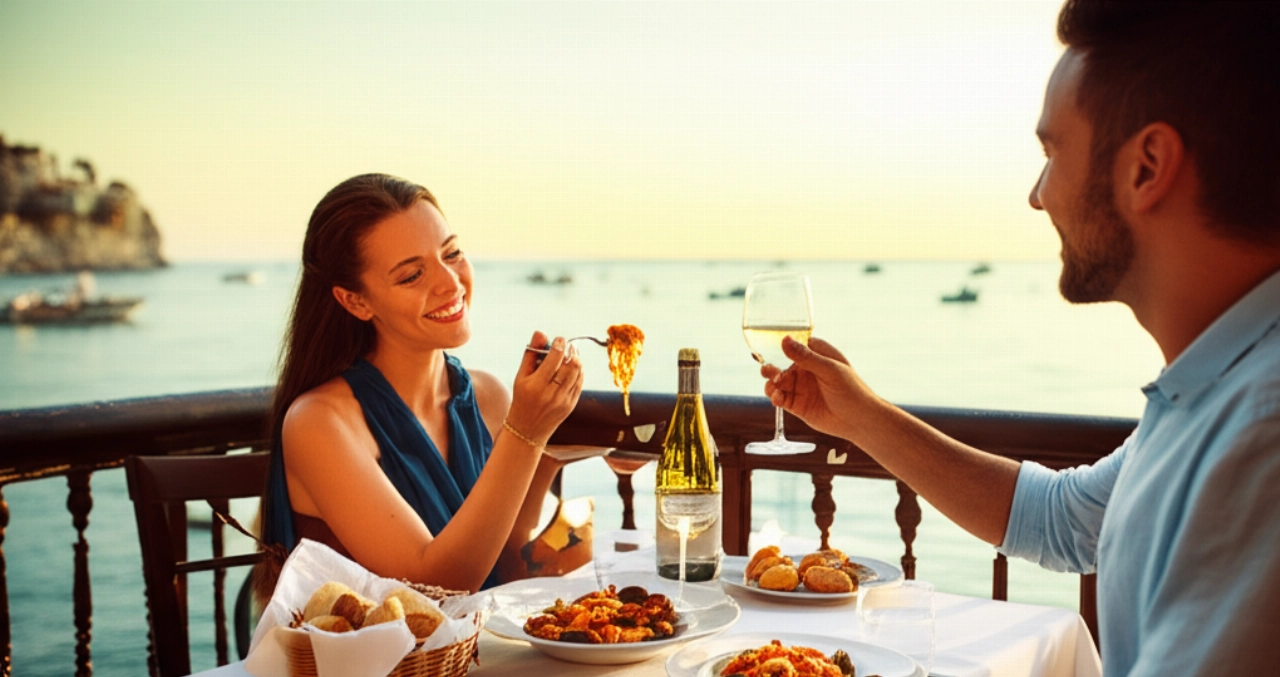
The 3 Mistakes That Ruin Seafood Pasta (and How to Avoid Them)
Even the most experienced cooks can fall into these traps. But you, with my tips, will easily avoid them, ensuring an impeccable dish:
- Overcooking the Seafood: This is the number one mistake! Mussels, clams, shrimp, and squid become rubbery and tough if cooked too long. They must be added at the right moment and cooked for strictly the necessary time. The secret: shrimp cook in a couple of minutes, mussels and clams open quickly, squid should be cooked either very quickly or very slowly (to make them tender); we will opt for quick cooking.
- Watery or Bland Sauce: A sauce that doesn't cling to the pasta or lacks intense flavor is a disappointment. This often happens because the water released by the seafood isn't reduced enough, or too much pasta cooking water is added. The secret: always filter the mussel and clam water and use it sparingly, letting it evaporate well.
- Not Cleaning the Seafood Properly: Sand in clams or mussels, or the black "vein" in shrimp, can completely ruin the experience. The secret: dedicating time to cleaning is an investment for the final taste. Purging clams, scrubbing mussels, and removing the intestinal vein from shrimp is a non-negotiable step.
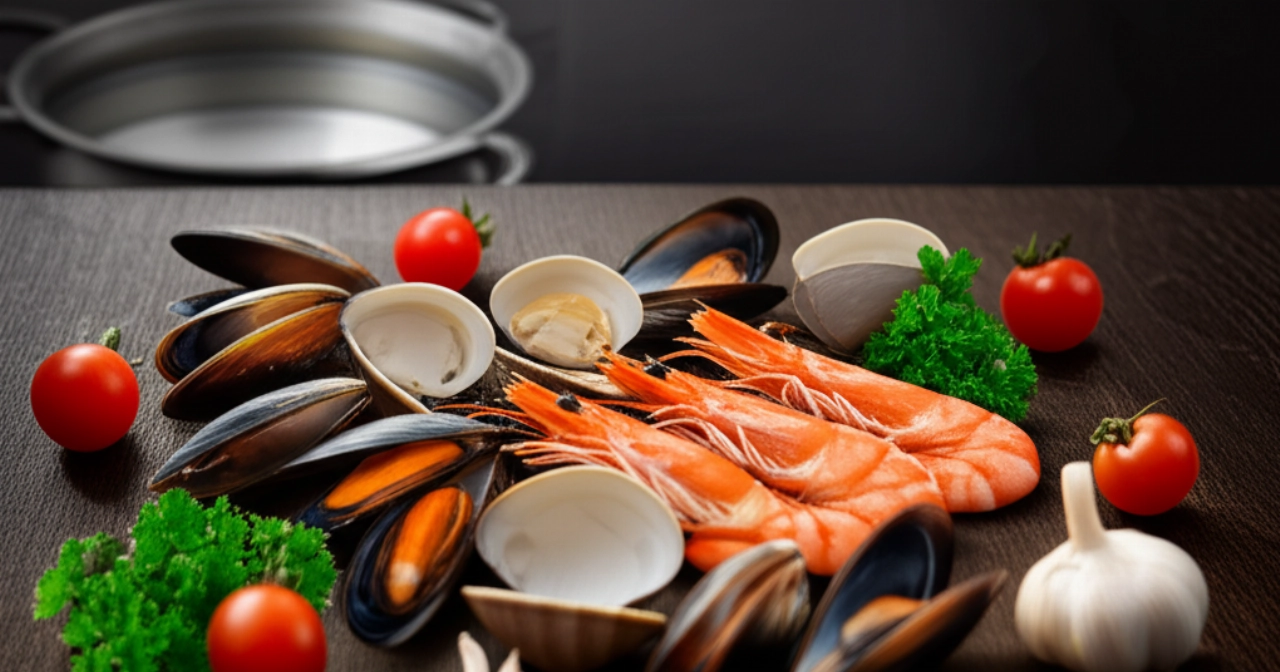
The Extra Touch: The Secret My Trusted Fisherman Revealed to Me
Years ago, a trusted old fisherman, with hands marked by salt and wind, revealed a trick that forever changed my Seafood Pasta. "Grandma, the true taste of the sea isn't just in the fish," he told me, "but in the soul of its broth."
His secret? After opening mussels and clams, don't throw away the cooking water they release! That is liquid gold, a pure concentrate of sea flavor. Filter this water with a fine-mesh sieve (or even better, with cheesecloth) to eliminate any sand or impurities. It will be this filtered, rich, and incredibly fragrant water that gives your sauce a depth and authenticity that no vegetable broth or plain water could ever match. Use it to thin the sauce, one ladle at a time, as it reduces. I assure you, it will make the difference between a good pasta and an unforgettable Seafood Pasta!
Let's Prepare Seafood Pasta Together: The Step-by-Step Guide
Now that we have all the secrets and the right ingredients, let's get cooking! Follow these steps calmly and confidently, and success will be guaranteed.
- Cleaning the Seafood (The First Step to Success):
- Mussels: Scrape off encrustations with a knife or brush, remove the byssus (the side beard) by pulling it firmly outwards. Rinse them well under running water.
- Clams: Place them in a bowl with cold water and a tablespoon of coarse salt for at least 2-3 hours (or even overnight in the fridge), changing the water a couple of times. This will help them purge sand.
- Shrimp: Rinse them, then remove the head and carapace. With a toothpick, make an incision along the back and remove the black intestinal vein (it's bitter and unpleasant).
- Squid: Clean the squid by removing the transparent bone, eyes, and beak. Rinse them well and cut them into rings or strips.
- Opening Mussels and Clams (The Aroma Starts Here):
- In a large pan, heat a drizzle of olive oil with a clove of garlic and a piece of chili pepper.
- Add the well-rinsed mussels and clams. Cover with a lid and cook over high heat for a few minutes, shaking the pan occasionally, until they have opened.
- As soon as they open, turn off the heat. Remove the seafood from the pan and set aside. Filter the cooking water that has settled at the bottom of the pan with a fine-mesh sieve (or cheesecloth) and set it aside: it's our "liquid gold"!
- Shell most of the mussels and clams, leaving a few with their shells for decoration.
- Preparing the Sauce (The Heart of the Dish):
- In the same pan (or a larger one if needed), add another drizzle of olive oil and the other finely chopped garlic clove (or whole, to be removed later).
- Add the squid and sauté them over high heat for 2-3 minutes. Don't overcook them!
- Deglaze with white wine, letting the alcohol evaporate completely.
- Add the cherry tomatoes cut in half or quarters. Cook for about 5-7 minutes, lightly crushing them with a wooden spoon.
- Add a ladleful of the filtered mussel and clam water. Let it simmer and reduce slightly.
- Cooking the Pasta and Combining Flavors:
- Meanwhile, bring a large pot of salted water to a boil and cook the pasta. Drain it very al dente (about 2-3 minutes before the time indicated on the package).
- When the pasta is almost ready, add the shrimp to the sauce. Cook them for 1-2 minutes, until they change color.
- Drain the pasta and transfer it directly to the pan with the sauce.
- Add the mussels and clams (both shelled and those with shells).
- Final Creaming (The Secret to Creaminess): Add a ladleful of pasta cooking water and stir vigorously to bind the sauce well to the pasta. If necessary, add a little more of the filtered seafood water.
- Turn off the heat, add plenty of fresh chopped parsley and a drizzle of raw olive oil.
- Serving (The Moment of Triumph):
- Plate immediately, garnishing with a few mussels and clams with shells and more fresh parsley.
- Serve hot and enjoy the applause!
Tips and Frequently Asked Questions about Seafood Pasta
Here are some of the questions I'm asked most often, with answers that will help you further perfect your dish:
- Can I use frozen seafood?
- Yes, you can, but the flavor will be less intense. If you use them, make sure they are of good quality and thaw them properly before use. You won't have the precious cooking water, so you'll need to balance the flavors with a good fish broth or a little more tomato.
- How do I know if the seafood is fresh?
- Mussels and clams must be live and have tightly closed shells. Shrimp should have a bright color and a sea smell, not ammonia. Squid should be shiny and firm. Always buy from trusted fishmongers!
- Can I prepare the sauce in advance?
- You can prepare the base of the sauce (sautéed aromatics, squid, cherry tomatoes, and filtered water) in advance. Add the shrimp, mussels, and clams only at the last moment, when you are about to finish the pasta, to prevent them from becoming rubbery.
- What is the best pasta to use?
- Spaghetti, linguine, or vermicelli are classic choices because their shape captures the sauce well. The important thing is that it's a good quality pasta that holds its shape well during cooking and releases starch for perfect creaming.
- Why is my sauce watery?
- You probably didn't reduce the water released by the seafood enough, or you added too much pasta cooking water. Remember to let the liquids evaporate well and to add pasta water only one ladleful at a time, to help with the creaming.
There you have it! Now you hold not just a recipe, but all the secrets to bring a Seafood Pasta to your table that will make you feel the scent of the sea and guarantee you tremendous success. Every forkful will be a journey, a sea embrace that will conquer all palates.
Don't be afraid to challenge yourself. Cooking is a journey of discovery and a gesture of love. With this solid guide, your dish will be a masterpiece that everyone will remember, and you will feel like a true guardian of authentic flavors.
Have you prepared our Seafood Pasta? We're very curious to see your dish! Leave a comment below, tell us about your experience, or share a photo on Instagram by tagging @CercaRicette.it. If you loved this journey into the taste of the sea, you can't miss our recipe for Seafood Risotto or for a perfect appetizer like Marinated Anchovies. The sea awaits you!
